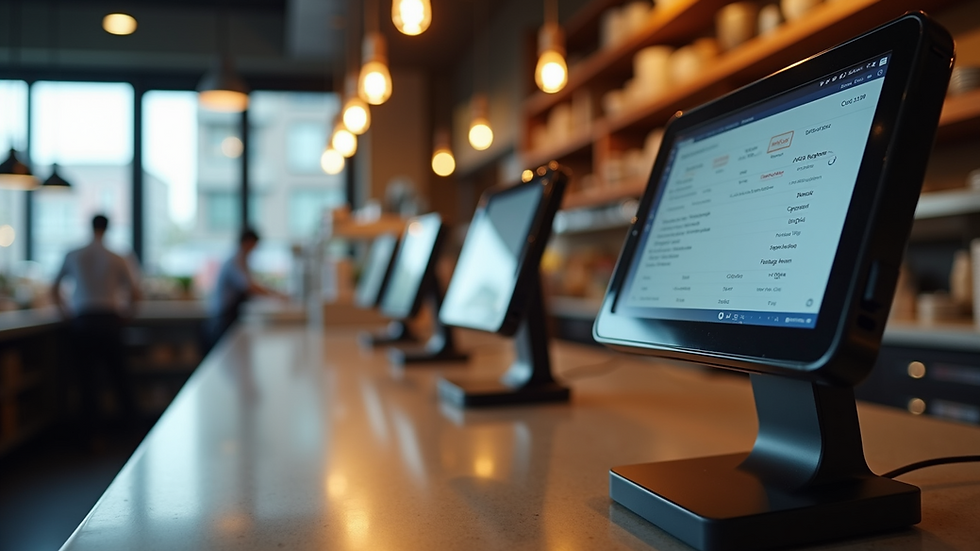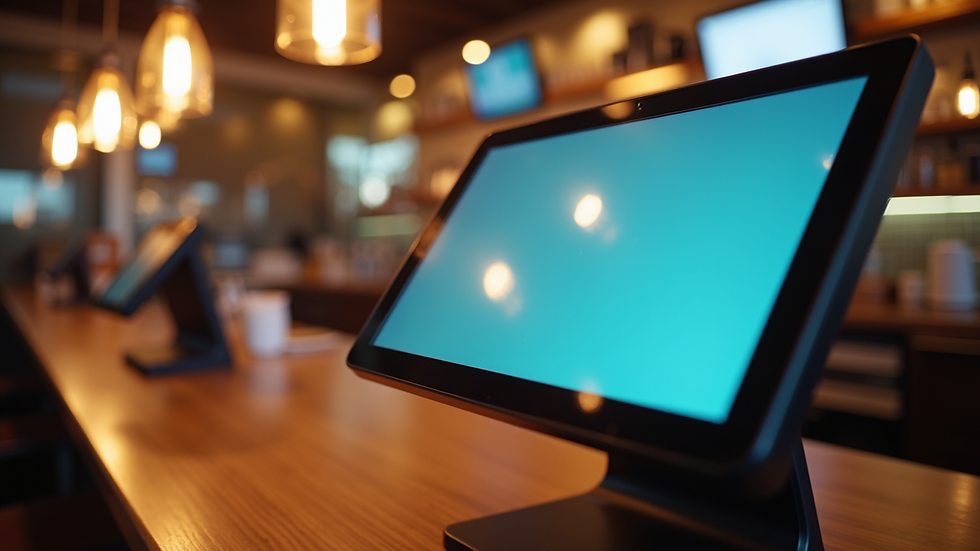Enhance Your Restaurant's IT Infrastructure Today
- Info (Kitxens.com)

- Aug 11
- 4 min read
Running a restaurant means juggling countless tasks every day. From managing orders to keeping customers happy, your IT infrastructure plays a crucial role in making everything run smoothly. If your technology is outdated or inefficient, you risk losing time, money, and even customers. But don’t worry - upgrading your restaurant IT infrastructure is easier than you think. Let’s dive into how you can transform your operations with smart, practical tech solutions that boost efficiency and customer satisfaction.
Why Your Restaurant IT Infrastructure Needs an Upgrade Now
Your restaurant’s IT infrastructure is the backbone of your daily operations. It includes everything from your point-of-sale (POS) systems to your kitchen display screens and online ordering platforms. When these systems are outdated or disconnected, chaos can ensue. Orders get mixed up, payments slow down, and your staff struggles to keep up.
Upgrading your IT infrastructure means faster service, fewer errors, and happier customers. Imagine a system where orders flow seamlessly from the front of house to the kitchen, payments process instantly, and inventory updates in real-time. This is not just a dream - it’s achievable with the right technology.
Here’s what a modern IT infrastructure can do for you:
Speed up order processing with integrated POS and kitchen display systems.
Improve accuracy by reducing manual entry errors.
Streamline inventory management to avoid running out of key ingredients.
Enhance customer experience with faster checkout and personalized promotions.
Enable remote management so you can monitor your restaurant from anywhere.
Investing in your IT infrastructure is investing in your restaurant’s future. It’s time to stop patching old systems and start building a tech foundation that supports growth.

Building a Robust Restaurant IT Infrastructure That Works
Building a strong IT infrastructure starts with understanding your restaurant’s unique needs. Whether you run a quick service spot, a full-service restaurant, or a food truck, your technology should fit your workflow perfectly.
Step 1: Assess Your Current Setup
Take a close look at your existing systems. What works well? What causes headaches? Talk to your staff and gather feedback. This will help you identify gaps and prioritize upgrades.
Step 2: Choose Scalable Hardware
Invest in hardware that grows with your business. This includes:
Reliable POS terminals with touchscreen interfaces.
Kitchen display systems that replace paper tickets.
Tablets or mobile devices for tableside ordering.
High-speed internet routers and secure Wi-Fi networks.
Step 3: Integrate Your Systems
Integration is key. Your POS should communicate with your inventory, accounting, and customer relationship management (CRM) software. This reduces double entry and keeps data consistent.
Step 4: Secure Your Network
Protect your customer data and business information with strong cybersecurity measures. Use firewalls, encrypted connections, and regular software updates.
Step 5: Train Your Team
Even the best technology fails without proper training. Make sure your staff knows how to use new systems confidently and efficiently.
By following these steps, you create a restaurant IT infrastructure that not only supports daily operations but also drives growth and innovation.

What is the Best Software for Restaurants?
Choosing the right software can make or break your IT infrastructure. The best restaurant software combines ease of use, powerful features, and seamless integration.
Here are some top categories and examples:
Point of Sale (POS) Systems
Look for POS software that supports quick transactions, split bills, and multiple payment methods. Popular options include Toast, Square for Restaurants, and Lightspeed.
Inventory Management
Software like MarketMan or Upserve helps track stock levels, manage suppliers, and reduce waste.
Online Ordering and Delivery
Integrate platforms like ChowNow or DoorDash to capture more orders and streamline delivery.
Employee Scheduling and Payroll
Tools such as 7shifts or Deputy simplify staff management and reduce scheduling conflicts.
Customer Relationship Management (CRM)
Use CRM software to build loyalty programs, send promotions, and gather customer feedback.
When selecting software, prioritize solutions that integrate well with each other. This creates a unified system that saves time and reduces errors.
For a comprehensive approach, consider partnering with providers specializing in restaurant technology solutions. They offer tailored packages that combine hardware, software, and support to fit your unique needs.

How Automation Transforms Restaurant Operations
Automation is a game-changer in the restaurant industry. It reduces manual work, speeds up processes, and frees your team to focus on delivering great service.
Here are some automation examples you can implement today:
Automated Order Taking: Use tablets or kiosks for customers to place orders directly, reducing wait times and errors.
Inventory Alerts: Set up automatic notifications when stock runs low, so you reorder before running out.
Digital Payment Processing: Enable contactless payments and automatic receipts to speed up checkout.
AI-Powered Analytics: Use AI tools to analyze sales trends, predict busy times, and optimize staffing.
Chatbots for Customer Service: Automate reservation bookings and answer common questions online.
Automation doesn’t mean replacing your team. It means empowering them with tools that make their jobs easier and your restaurant more efficient.
Future-Proof Your Restaurant with Smart IT Investments
Technology evolves fast, and your restaurant IT infrastructure should keep pace. Future-proofing means choosing flexible, scalable solutions that adapt to new trends and customer expectations.
Consider these strategies:
Cloud-Based Systems: Cloud software offers remote access, automatic updates, and easy scalability.
Mobile Integration: Support mobile ordering, payments, and staff communication.
Data Security: Stay ahead of cyber threats with regular audits and compliance with data protection laws.
Sustainability: Use energy-efficient hardware and digital tools to reduce paper waste.
Customer Engagement: Leverage digital marketing and loyalty apps to build lasting relationships.
By investing smartly today, you set your restaurant up for success tomorrow. Don’t wait for problems to arise - be proactive and embrace technology as a growth partner.
Upgrading your restaurant IT infrastructure is not just a tech upgrade - it’s a business transformation. With the right tools and strategies, you can streamline operations, delight customers, and boost your bottom line. Ready to take the next step? Explore how restaurant technology solutions can help you build a smarter, faster, and more profitable restaurant today.




Comments